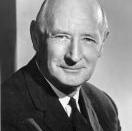The Old and Middle English evolved with their influences from the languages of the ruling powers. Manuscripts provide evidence of the changes in orthography and hints at the changing pronunciation as the seat of power passed from the Germanic Anglo-Saxon to the French Norman. As a result, there was a constantly changing relationship from the phonemically characterised spelling of the Old English to one whose spelling may not reflect the pronunciation in the Middle English.
The Old English (AD 450-1100)
The ruling force that helped shape the Old English language was the Anglo-Saxons (AD 450-850). They hailed from some warrior tribes of Northern Germany such as Jutes, Angles and Saxons. (Graddol, 1996, p 41, 44-45) Their different linguistic background leads to a variation in dialects for the different parts of the country (Graddol, 1996, p 44-45, 134). In an effort to promote a standardized English, King Alfred (AD 849-899) commissioned the translation of some Latin texts into the dialect of West Saxon, the leading political and cultural centre.
That made West Saxon the dominant dialect (Graddol, 1996, p 107). Another force that invaded England was the Scandinavian's Vikings. Their linguistic influence was on a smaller scale and fell mainly in the northern part of England (Graddol, 1996, p 72)
Although the dialects varied, the manuscripts showed little variation in the spelling of different words. The scribes had agreed on a certain convention for writing. They agreed to base Old English on the Roman alphabet. They modified the Roman set to accommodate the English sound system, such as þ (thorn for th sound) and D (eth for the heavier and thicker th sound). (Graddol, 2002, p 141). Besides, the scribes produced books from a relatively small area with "little dialect variation and effective institutional control (Graddol, 1996, p 72).
One example of an English poem of the era was the story of Caedmon from Bede's Ecclesiastical History of the English People (Graddol, 1996, p. 111-112). The poem, written in Old English, brings out some of the conventions adopted by King Alfred's scribes. Scholars could not use recordings as evidence for their sounds so they made a few assumptions about the relationship between the sounds and the spelling. First, they assumed that the spelling was close to the pronunciation. That means, unlike modern English, there are neither silent letters nor any other unnecessary letters. Second, the spelling adapted the sound value of spoken Latin, the language with which linguistic scholars have more historical evidence to work on than Old English. Last, the Old English used a combination of known alphabets to represent phoneme in an unfamiliar sound or sounds in unfamiliar position, such as /s/ in sing and /sp/ in sprecende. (Graddol, 1996, p 113).
The Middle English (AD 1100-1450)
After the Germanic and Scandinavian invaders, the Norman came. They brought along the French language. The court and the aristocrats were drenched in French language, culture and literature (Graddol, 1996, p. 122).
The Normans brought an unstable effect on King Alfred's effort in standardizing English. His Winchester scriptorium was disrupted. (Graddol, 1996, p. 123). That resulted in inconsistency in spelling and perpetrated a variety based on the local dialect and habits of the scribes. As a result, spelling might not reflect the sound of the words but point out the source of the manuscript (Graddol, 1996, p. 73).
The scribes, trained to write in French and Latin, adapted some of the conventions of their language into English. They changed þ for th and introduced qu for queen in place of cwene. Pronunciation, then in contact with French, also changed. That means that the spelling would have moved far from reflecting the pronunciation of the words. Scribes simply write in what they perceived correspond to the pronunciation i.e. according to the dialects of the region. The instability in spelling is sometimes reflected even within the same page of a manuscript (e.g. in works of Chaucer, Lydgate or the Gawain poet). (Graddol, 2002, p. 141).
Another practice that caused the instability was in the scribes' attempt to make words more legible. They substituted o for u when it was followed by m or n. The lawyers' clerks also contributed to the confusion in the spelling. They used longer words. They added superfluous letters because they were paid by the length of their work. (Graddol, 2002, p. 141). For these reasons, spelling and pronunciation moved further apart in the Middle English. Caxton, credited to print the first English book, brought back the trend to fix spelling. But the pronunciation of English continued to evolve, and spelling no longer reflects its phonemic nature. For this reason, our modern English spelling today reflects medieval pronunciation. (Graddol, 2002, p. 141)
.
Major attempts to reform orthography
The Middle English period of the Normans is followed by the Early modern English period of the Renaissance (AD 1450-1750) and the Modern English period of the Reformation (AD 1750-1950). English language gained a position in the political, commercial and science during the Renaissance. This period also marked the rising middle class into positions of importance in the commercial world. That means more people join the ranks of the educated and literate. Dictionaries helped to standardize the grammar and spelling of the era. The reformation was the age of industrialization and colonialization (Graddol, 1996, p. 41). These are the later period in which English spread to other countries and learned men tried to reform.
One of them was John Hart. He advocated in 1559 that 'writing should have so many letters as the pronunciation neadeth voices and no more or less'. But his publication, An orthographic containing the due order and reason how to write or painte the image of Manne's voice, most like to the life or nature, made little impact on the English language of his time. (Graddol, 2002, p. 143)
For Hart's recommendation did not overcome some problems in the English orthography. One was the overwhelming number of phonemes?forty-five in all?that could not cover the number of letters in the Roman alphabets. For this reason, English orthography used digraphs, the joining of two letters to represent a single phoneme (e.g. ch, sh). It also used a single letter to represent different sounds (such as c in medicine and medical). Last, it uses the last letter of the word to influence the way the vowel is pronounced (e.g. silent e in 'pine' and 'tape' as opposed to 'pin' and 'tap') (Graddol, 1996, p. 73). These cannot be worked around to match the minimum number of letters to the sounds as recommended by Hart.
In the middle of the nineteenth century, Sir Issac Pitman invented a revolutionary system. He introduced a system of shorthand writing he called 'phonography'. By means of strokes, circles and dashes, it matches the phonetic system. The writer can rapidly transcribe a spoken language verbatim. Pitman's research data showed 95 per cent of the newspaper reporters and 98 per cent of the shorthand clerk used it. (Graddol, 1996, p. 75). And we know that it still served journalistic and secretarial purposes for its speed and accuracy right up to the 1980s when the computer and technology takes over.
Pitman, together with a phonetician, Alexander Ellis, founded another system of writing. They used and refined alphabets as consonants and vowels to make words to reflect their phonetic properties. They published their research in a few popular journals and attracted quite a bit of attention. (Graddol, 1996, p. 76-77)
Pitman's grandson, Sir James Pitman, implemented Pitman's and Ellis' system into 'the initial teaching alphabet' for use in several English-speaking countries in the 1960s. It was well received and taught in children's writing and reading classes. However, it was short lived and died in a decade. (Graddol, 1996, p 78)
Alexander Ellis also invented another phonetic transcription system called Glossic at the end of the nineteenth century. It emphasises the nuances of accent. Ellis used the system in his production of English Dialects: their sounds and homes (1890). The English Dialect Society used it. Otherwise, it quickly loses appeal. Today, only the International Phonetic Alphabet used the system for making transcriptions of pronunciations in phonetic detail. (Graddol, 1996, p 78)
Noah Webster also tried to introduce a new system of spelling. He advocated an omission of 'all superfluous or silent letters' so that 'bread' became 'bred' and 'head' became 'hed'. He wanted to lessen 'the trouble of writing?of learning the language?reduce the true pronunciation to a certainty'. That way, both foreigners and children would find writing English easy and it would make pronunciation uniform. He also advocated substituting letters that reflect the pronunciation e.g. 'mean' with 'meen'. He also advised that diphthong be joined by a small stroke and new sounds be represented by an old letter with a point or a small dash e.g. ä, ? , or 4;. (Graddol, 1996, p 91-93)
Webster appealed to the Americans for a unique American English. He made it personal when he wrote that it would facilitate learning for both adult and children. He presented the cultural side: he wanted an orthography that will advocate a uniform pronunciation for all in United States. He also appealed to the financial consideration where the cutting down the number of letters will save on the expense of time and paper used. Finally, he made it political when he appealed to the nationalistic feelings of the newly formed United States to set up a national language unique to them. (Graddol, 1996, p 75)
The American people must have been excited by the nationalistic call for a national language. Today, there are differences in the American orthography and the British ones due to Webster's work. But the differences are less radical than the one Webster wanted. For the same reason that the English speaking society rejects the above reforms, they did not accept all of Webster's radical changes. (Graddol, 1996, p 75)
A phonetically attuned orthography is appealing only to a certain extent. However, many were resistant to change because English is a dynamic and constantly changing language. If the spelling follows the pronunciation and the pronunciation constantly changes, then the spelling will constantly change. If only one dialect uses the phonetically based system, then, it follows that other dialect speakers cannot base their spoken language on the same set of rules. On the other hand, speakers of different dialects can use the same guidelines and have different spelling for the same words. This does not give stability in the orthography nor encourage learning. Books will need to have multiple editions in the same language. It will not unite the English-speaking world and the non-English speaking world as the lingua franca in commerce and technology. (Graddol, 2002, p 143)
Another reason the reformers did not succeed was protest of the conservatives and purists. They were afraid that the systems would capture badly formed or pronounced words and fixed them into English orthography permanently. That would ruin the beauty of the sound of English as they knew it. (Graddol, 1996, p 78)
Besides, it would slow down the way we could read quickly. When we read, our eyes catch the word and our minds form a mental picture of its pronunciation. Then our minds will do a quick search for its meaning. The more familiar the word, the faster our minds process the words. For this reason, some words do not follow the phonemic rules but adapt the 'easily recognizable visual shape'. A constantly changing orthography will not facilitate the quick-search routine of the mind and eye as easily in the reading process. (Graddol, 2002, p 143)
Besides the above reasons, a spelling reform will face resistance from cultural, political and economical sector. Pressure from those with vested interests in publishing and education would resist the changes. Political unrest and dissatisfaction might arise from a choice of any one domineering dialect. This, from the main influencer?UK, may spread confusion and chaos in language learning among the non-English speaking countries and those simply following the trend. The conservative ones will also resist simply because they resist changes and instability. (Graddol, 1996, p 74)
The English spelling and its pronunciation has gone through much changes. But it would not retrace its steps to the Old English where it faithfully fixed the spelling on the phonemic characteristics of the words. But in the Middle English era, the pronunciation constantly changes but the spelling remained fixed.
2067words
Bibliography
Graddol, D; Leith. D; Swann J. (ed.) (1996). English: History, Diversity and Change. London: The Open University.
Graddol, D; Cheshire J; Swann J. (2002). Describing Language. Buckingham: Open University Press.


